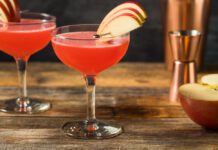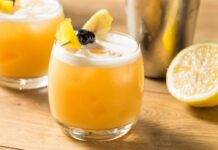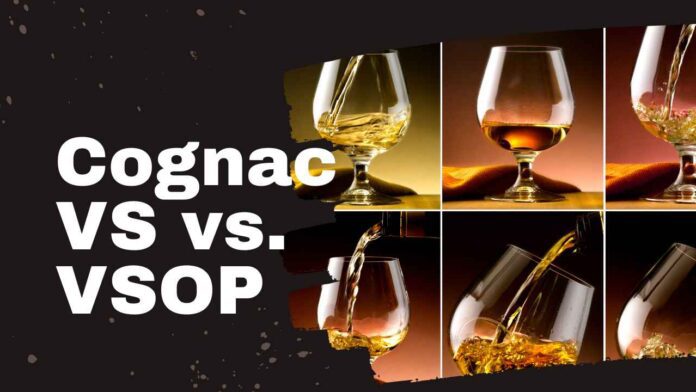This page may contain affiliate links. Please see our Disclaimer for more information. Always drink responsibly and adhere to your local legal drinking age.
Introduction
Welcome to the fascinating world of cognac, where flavors, aromas, and craftsmanship come together in perfect harmony. If you’re new to this indulgent spirit or want to expand your knowledge about its various grades — VS, VSOP, and XO — you’ve come to the right place.
This blog post delves into the intricacies that set these classifications apart and how they can impact your drinking experience.
Key Takeaways:
- Cognac grades are defined by the age and quality of the brandy, with VS (Very Special), VSOP (Very Superior Old Pale), and XO (Extra Old) being the most commonly used designations.
- The aging process plays a crucial role in shaping the flavor profiles of cognacs – VS cognacs are young and fruity, while VSOP is complex and well-aged. XO offers rich and complex flavors due to its extended maturation process spanning six years or even longer, depending on the producer’s preferences.
- Different types of cognac, including Single Estate Cognac, Grande Champagne Cognac, and Borderies Cognac, each with unique characteristics that offer exclusive flavor profiles not found anywhere else.
- To truly appreciate your chosen grade of cognac’s unique characteristics, it should be sipped slowly at the proper serving temperature, thoroughly enjoying all its flavors and aromas.
Understanding Cognac Grades
The grades of cognac are defined by the age and quality of the brandy, with VS, VSOP, and XO being the most commonly used designations.
Definition And Production Process Of Cognac
Cognac is a type of brandy from the Cognac region in southwestern France. It starts as a white wine, usually made from Ugni Blanc, Colombard, or Folle Blanche grapes.
The first step is to convert the wine into an eau-de-vie through double distillation using copper pot stills called Charentais stills. This helps concentrate flavors while removing impurities from the liquid.
After this phase, it’s time for some rest and relaxation; the maturation process begins. Eaux-de-vie is transferred into French oak barrels, where they age to develop their unique taste and aroma characteristics over time.
Throughout this intricate procedure, master blenders oversee each step with a precision that shapes a cognac’s quality grade – VS (Very Special), VSOP (Very Superior Old Pale), or XO (Extra Old).
What Do The Grades Mean?
The grades of Cognac, such as VS, VSOP, and XO, essentially represent the age and quality of the spirit. Established by the Bureau National Interprofessionnel du Cognac (BNIC), these classifications help you understand how long a particular Cognac has been aged in oak barrels before it reaches your glass.
On the other hand, a bottle labeled as VSOP (Very Superior Old Pale) signifies that its youngest eau-de-vie has been aged for at least four years. This results in a more complex flavor profile than its younger counterpart – think smoother textures and subtle notes of toffee from extended barrel aging.
As for XO (Extra Old) grade Cognacs must have an eau-de-vie aged for a minimum of six years or even longer, depending on the producer’s preferences.
How Ageing Periods Affect Flavor Profiles
The aging process plays a pivotal role in shaping the flavor profiles of various cognac grades. During this period, the eaux-de-vie undergoes maturation within oak barrels, which enhances its complexity and imparts unique characteristics to the final product.
For instance, VS (Very Special) cognacs must be aged for at least two years before entering your glass. This shorter aging period results in a young, fruity taste profile with vibrant aromas – ideal for cocktails or casual sipping.
On the other hand, VSOP (Very Superior Old Pale) requires a minimum of four years spent in those French oak barrels.
As we move up to even older expressions like XO (Extra Old), you’ll find that these high-end offerings boast exquisite depth and nuance due to their extended maturation process spanning over six years.
The Differences Between VS, VSOP, And XO
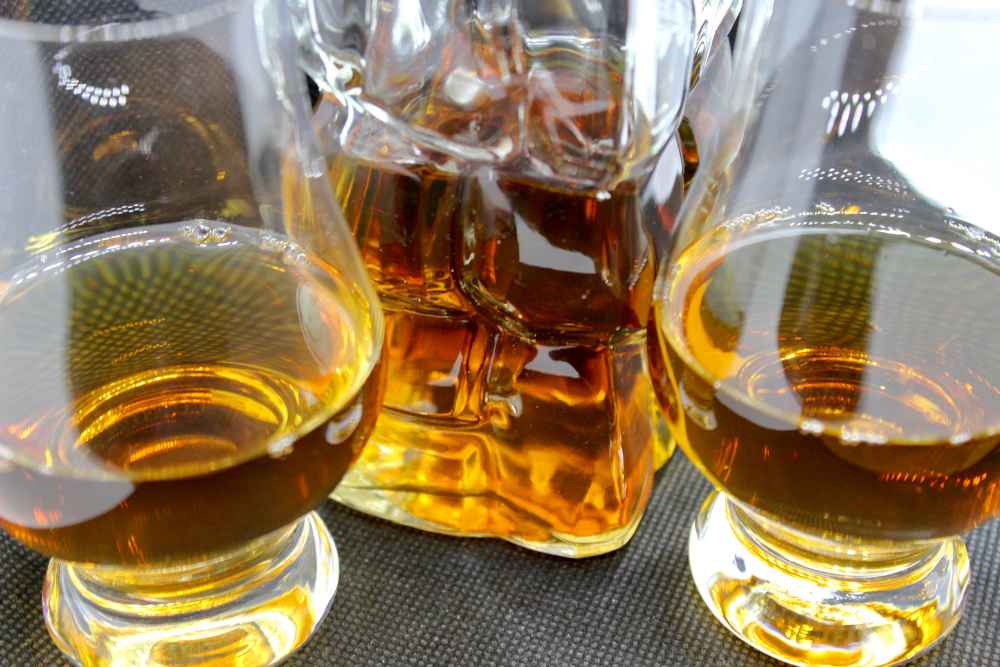
The VS Cognac is young and fruity, while VSOP is complex and well-aged, and XO offers rich and complex flavors; knowing the differences between these grades will help you choose the right cognac for your tastes.
VS: Young And Fruity
VS cognac, also known as Very Special cognac, is the youngest and most youthful grade of cognac. This type of cognac is aged for at least two years in oak barrels and has a fresh, fruity flavor profile that makes it ideal for cocktails.
Lively fruit aromas with hints of lemon zest and grapefruit characterize VS cognacs.
Some famous brands that produce VS cognacs include Hennessy, Rémy Martin, Courvoisier, and Martell. These brands use different blends of eaux-de-vie to create unique flavor profiles in their VS offerings.
VSOP: Complex And Well-Aged
If you’re the kind of cocktail drinker who likes spirits with a bit more complexity and depth, then VSOP cognac might be your drink of choice. VSOP stands for “Very Special Old Pale”, indicating that the cognac has been aged for at least four years.
Thanks to its extended contact with French oak barrels, the brandy will have developed deeper flavors and aromas during this time.
Some great examples of VSOP cognacs include Hennessy Privilege VSOP or Remy Martin 1738 Accord Royal. These brands are known for producing high-quality spirits perfect for sipping neat or using as a base in cocktails like an Old Fashioned or Sazerac.
XO: Rich And Complex Flavors
XO cognac is the highest quality and has been aged in oak barrels for a minimum of 10 years. As a result, it features rich and complex flavors that are unmatched by other types of cognacs.
The aging process imbues XO cognac with deep amber hues and imparts notes of dried fruit, spices, chocolate, and leather to its flavor profile.
Some well-known XO cognacs include Hennessy’s Paradis Imperial, Remy Martin’s Louis XIII, and Martell’s Cordon Bleu.
How To Choose The Right Grade For You
Choosing the right grade of Cognac can be daunting, but it doesn’t have to be. If you’re new to Cognac, start with a VS variety. These younger and fruitier options are perfect for mixing in cocktails or sipping on the rocks without breaking the bank.
For those seeking something more complex and well-aged, go for a VSOP Cognac aged for a minimum of four years. The longer aging process lends to deeper flavor profiles that pair perfectly with dessert or as an after-dinner drink.
Finally, XO Cognacs aged for at least ten years are the way to go for those looking for rich and complex flavors.
No matter which grades you choose, always remember to sip slowly and take in all the flavors and aromas this luxurious drink has to offer.
Types Of Cognac And Their Characteristics
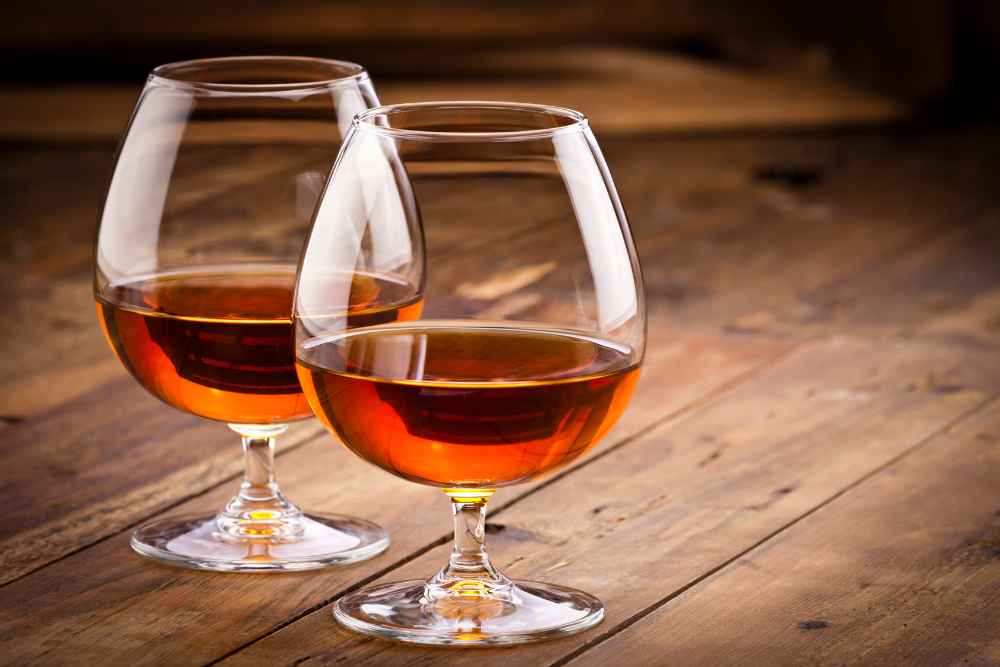
There are different types of cognac, including Single Estate Cognac, Grande Champagne Cognac, and Borderies Cognac, each with its unique characteristics.
Single Estate Cognac
Another emerging trend in the world of cognac is Single Estate Cognac, which refers to brandies made exclusively from grapes grown on a single estate.
These cognacs are becoming increasingly popular as they offer unique flavor profiles that cannot be replicated elsewhere. For example, ABK6 VSOP Single Estate Cognac from Fins Bois has hints of vanilla and spice due to its aging process in French oak barrels.
Another excellent option is Abecassis Grand Champagne XO, which boasts flavors of dried fruit and hazelnuts thanks to the use of only Grande Champagne grapes.
Grande Champagne Cognac
Grande Champagne Cognac is one of the most sought-after types, known for its exceptional quality and smooth taste. It is produced from grapes grown exclusively in the Grande Champagne region of France, with a unique soil composition that produces some of the best eaux-de-vie for cognac production.
The aging process for Grande Champagne Cognac can last up to several decades, resulting in a rich and complex flavor profile with notes of vanilla, oak, and fruit.
Borderies Cognac
Borderies Cognac is a unique type of Cognac made in the Borderies cru. This region produces some of the best Cognacs, known for their subtle floral notes and smooth finish.
They are usually more refined than other types, with flavors that are both fruity and spicy. One famous example is CAMUS Borderies XO, which has won several awards for its exceptional taste profile.
If you’re looking for an extraordinary and distinctive type of Cognac, then Borderies could be just what you need.
The Aging Process And Its Effect On Cognac Flavor
The aging process of cognac is crucial in developing its complex flavors, as it spends years in French oak barrels where it absorbs aromas and tannins from the wood.
Oak Barrels And Maturation
As the saying goes, “Age brings wisdom,” the same is true for cognac. The aging process of cognac takes place in oak barrels, which adds to its distinctive taste.
The size and shape of these barrels also play an essential role in determining the final flavor profile of the cognac. Larger barrels produce a gentler taste, whereas smaller ones create a more intense flavor.
Blenders use a variety of barrel sizes during maturation to achieve balance and complexity in their blends.
To fully appreciate oak’s effects on cognac, compare two different brands with varying ages side-by-side.
[IMPORTANT FACTS]
– Oak barrels used for cognac must be made from French Oak.
– The size and shape of these barrels can impact flavor profiles.
– Barrel selection is crucial during blending for achieving balance & complexity.
– Cognacs age differently due to variables such as wood type & climate conditions inside storage facilities.
– Most aged spirits derive their color from tannins released by wood over time through contact between alcohol and lignin within wood fibers
The Importance Of Distillation And Blending
Distillation and blending are crucial steps in the production of cognac. Distilling wine from Ugni Blanc grapes using double distillation in copper pot stills creates the eaux-de-vie as the foundation for cognac.
Each producer has a unique approach to aging, with some using brand new casks while others prefer traditional methods like reusing older casks. The final product is a blend of different eaux-de-vie, with its age determined by the youngest of the blend.
How To Savor And Enjoy Cognac
Please choose the proper glassware for your cognac, such as a tulip or snifter glass, to help concentrate its aromas and flavor.
Choosing The Right Glassware
The type of glass you use to enjoy your cognac can significantly impact the taste experience. Tulip-shaped wine glasses are recommended for savoring cognac neat, as their narrow tops help concentrate the aromas while the wider base allows room for swirling and oxygenation.
When mixing cocktails using cognac, opt for short tumblers or snifters instead. These glasses promote a slower evaporation rate and allow more time to appreciate each sip’s flavors fully.
Optimal Serving Temperature
The temperature at which you serve cognac can greatly impact its taste and aroma. Serving VS and VSOP cognacs chilled or over ice is recommended, while XO should be served at room temperature in a snifter glass.
The colder serving temperatures of younger cognacs help to soften their stronger flavors and make them more approachable for mixing into cocktails, such as the Sidecar or French Connection.
However, warming up a glass of cognac with your hand can also release its aromas and flavors, creating a unique sensory experience.
It’s important to note that heating up Cognac is not recommended as it may destroy the liquor’s delicate flavors due to alcohol evaporation.
Taking In The Aromas
Before sipping your Cognac, take a moment to appreciate the aroma. Swirl the glass gently and hold it near your nose, taking in the complex scents from aging in oak barrels.
You might pick up notes of vanilla, fruit, chocolate or spices.
Savoring the aroma before drinking can enhance your overall experience by allowing you to fully appreciate the nuances of each grade’s unique flavor profile.
Sipping Slowly
To truly enjoy the full flavor and aroma of cognac, it’s important to sip it slowly. Cognac is not meant to be consumed quickly like a shot; rather, it should be savored and appreciated.
Take small sips, allowing the liquid to roll across your tongue, and breathe in its complex aromas.
In addition to taking small sips, it’s crucial to serve cognac at the right temperature. The ideal serving temperature for most cognacs is 60-65 degrees Fahrenheit.
Some of the more subtle flavors might get lost if served too cold or too warm.
Cognac Cocktails: How To Mix Them
Learn how to whip up classic cocktails like the Sidecar, French Connection, and Sazerac using cognac as a base. These easy-to-make drinks are perfect for sipping on warm summer nights or impressing your friends at your next dinner party.
Sidecar
The Sidecar is a classic Cognac-based cocktail that has been enjoyed for decades. It became popular in the early 20th century and quickly gained popularity among sophisticated drinkers.
The drink typically consists of Cognac, Cointreau, and lemon juice. However, its recipe can vary depending on personal preference or the bartender’s creativity.
One great thing about the Sidecar is that you don’t need to use expensive XO cognacs to make it taste good; VS or VSOP options are sufficient since their flavors often temper when mixed with other ingredients like Cointreau or fresh citrus juices.
French Connection
If you’re a cocktail enthusiast, you may have heard of the French Connection. This popular cocktail combines Cognac and Amaretto to create a sweet and nutty flavor profile.
The drink comes from the classic movie of the same name, which starred Gene Hackman as Detective Jimmy “Popeye” Doyle. To make a French Connection using Hennessy Very Special and Grand Marnier, pour 2 ounces of Cognac into an Old Fashioned glass filled with ice cubes, followed by 1 ounce of Grand Marnier.
Today’s modern connoisseur prefers their French Connection cocktail to be drier, so they use less Amaretto in their mixers. In fact, many prefer a ratio of 1:2 (Amaretto: Cognac) rather than equal parts.
Sazerac
The Sazerac is a classic cocktail originally made with cognac but now usually includes rye whiskey due to the phylloxera plague’s impact on cognac supplies. However, using cognac in this cocktail remains an option and can provide a unique twist on the traditional recipe.
The Improved Cognac Sazerac takes things up a notch by incorporating absinthe into its sugar, bitters, and cognac blend for a rich and complex flavor profile. When making this cocktail at home, it’s recommended to stick with either rye whiskey or cognac as the base spirit to avoid any unpleasant tastes or textures.
Popular Cognac Brands And Their Specialties
Hennessy Cognac is known for its smooth, full-bodied flavor and is one of the highest-quality cognacs available. Other popular brands include Rémy Martin, Courvoisier, Martell, Hine, and Delamain, each with its unique specialties.
Hennessy
Hennessy is one of the most popular and well-known brands of cognac globally. It has produced some of the finest blends since its establishment in 1765. The brand’s most accessible varieties include VS, VSOP, and XO cognacs.
The VS, or “Very Special,” is aged for at least two years and offers a young and fruity flavor profile suitable for cocktails like Sidecars or French Connections. Meanwhile, the VSOP, or “Very Superior Old Pale,” provides a more complex taste with notes ranging from vanilla to cinnamon due to its aging process of at least four years.
While Hennessy stands out as one of the best cognac distillers globally, it is essential to understand that cognac refers only to brandy produced within specific regions in France– unlike whiskey, which comes from grains.
Rémy Martin
Rémy Martin is a popular and highly regarded cognac brand producing quality spirits for over 300 years. Their most popular offering is the Rémy Martin V.S.O.P., a blend of grapes grown in Grande and Petit Champagne, the most prestigious regions.
However, Fine Champagne is their specialty, which blends grapes from both regions to create a unique and flavorful profile. Rémy Martin has received critical acclaim for their 1738 Accord Royal VSOP Cognac and XO Cognac, known for being richly complex with exceptional flavors.
Courvoisier
Courvoisier is a well-known cognac brand offering various expressions, including VS, VSOP, and XO. Their VS expression is a blend of different eaux-de-vie aged for at least two years, resulting in a young and fruity flavor profile.
The VSOP expression lasts at least four years and boasts complex and well-aged flavors.
In addition to their high-quality cognacs, Courvoisier has recently revamped the packaging of their expressions to appeal to modern consumers while still honoring their heritage.
Martell
Martell is a name that’s synonymous with fine cognac. This brand has produced some of the best cognacs in the world since 1715, and it’s still going strong today. Martell VSOP is one of the most popular offerings from this iconic brand, thanks to its smooth and balanced taste profile.
It features notes of apricot and vanilla, making it perfect for cocktails or as an after-dinner drink. Meanwhile, Martell XO is aged for at least 10 years to create a complex flavor profile that includes dark chocolate and figs – perfect for those who appreciate a truly exceptional drinking experience.
Hine
Hine is a popular cognac brand that offers some of the best single-estate offerings on the market. The Hine Rare VSOP, for example, uses Grande and Petite Champagne grapes in its blend, which gives it its complex and well-aged profile.
This particular VSOP is priced about 70% higher than Courvoisier and Martell’s VSOP offerings, but many connoisseurs swear by Hine’s quality. In addition to their VSOP line, Hine offers other exceptional blends like ABK6 VSOP Single Estate Cognac from Fins Bois and Abecassis Grand Champagne XO.
Delamain
Delamain Cognac is a highly-regarded brand that focuses on grape varietals and terroir. They set themselves apart from other cognac producers by avoiding age statements such as VS, VSOP, and XO, instead relying on the quality of their ingredients and craftsmanship to create superior blends.
For example, they offer an XO cognac that has been aged for an impressive 25 years. Delamain’s commitment to excellence has earned them a reputation as one of the most distinguished cognacs.
FAQ
Q: What is the difference between VS, VSOP, and XO cognac?
A: The main difference between VS, VSOP, and XO cognac is the minimum amount of time that the cognac must be aged. VS (Very Special) cognac is aged for at least two years, VSOP (Very Superior Old Pale) for at least four years, and XO (Extra Old) for at least six years.
Q: What does the term “VS” stand for?
A: The term “VS” stands for “Very Special.”
Q: What does the term “XO” mean?
A: The term “XO” stands for “Extra Old.”
Q: What is a Napoleon cognac?
A: Napoleon cognac is another name for a blend of cognacs aged for at least six years.
Q: What is the average age of a VSOP cognac?
A: The average age of a VSOP cognac is around 10 years.
Q: What is the highest quality cognac?
A: The highest quality cognac is an XO cognac, aged for at least six years.
Q: How long is a cognac aged?
A: A cognac can be aged from two to over 100 years.
Q: What does the term “eaux-de-vie” mean?
A: “Eaux-de-vie” refers to the clear, colorless spirit used to make cognac.
Q: What is the age of the youngest eau-de-vie that can be used to make a VS cognac?
A: The youngest eau-de-vie that can be used to make a VS cognac is at least two years old.
Q: How is XO cognac made?
A: XO cognacs blend eaux-de-vie, aged in oak barrels for at least six years.
Conclusion
In conclusion, understanding the differences between VS, VSOP, and XO cognacs is crucial in enjoying this sophisticated spirit. Each grade represents a different level of maturity and complexity achieved through aging eaux-de-vie in oak barrels.
When choosing your cognac, remember that VS will offer a younger and fruitier taste, while VSOP provides a complex yet sweet profile with woody notes.
Lastly, XO is perfect for an indulgent experience with rich and multidimensional flavors. Whichever you choose, savor it slowly at the proper serving temperature to truly appreciate its unique characteristics.



